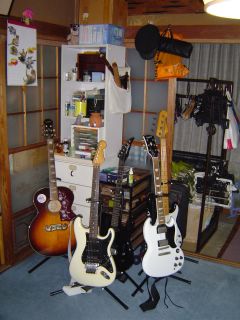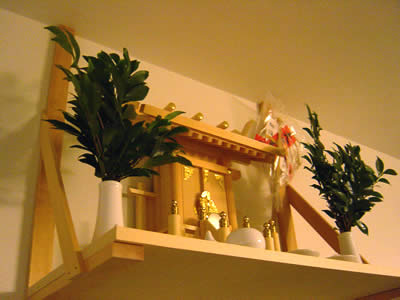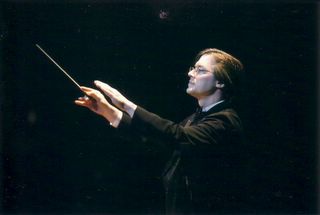December 26thWell, Mr. Ogawa managed to preempt the day before Christmas, so how about the day after, as well?
AND the next one, too? This time it was for the
All-Japan Selected High School Orchestra Festival (fanfare of dubious intonation).
This is actually a very prestigious event, at least in theory. Basically, the Japan Youth Orchestra Federation and certain members of the Imperial Family get together and invite certain senior high school orchestras from around the country to come together, perform, judge each other, and listen to critiques from a panel of judges
(though it's not really a competition). In the very beginning it was only a one-day event with less than a dozen participating groups. This year there were more than three dozen orchestras arriving, so they divided them into two separate events (A group and B group) spanning three days. It was to be the fifteenth such Festival. I'm proud to say it was also the thirteenth time in a row that the orchestra of Ye Olde Academy
TM was invited.
I went along with the orchestra to the Festival almost every year from their third appearance till the tenth. Unfortunately, when Mr. Karatsu became the music club's third director four years ago I saw both my role and my rank within the group decline rapidly as his improved. During the orchestra's ninth showing at the Festival both he and I attended, and he had almost nothing to do. During the tenth showing it was I who was largely left standing in the corner like a spare tire. Two years ago a visit to Oregon prevented me from being there. Last year Mr. Ogawa told me I wasn't needed.
Frankly, I couldn't help wondering why Mssr. Maestro Ogawa wanted me to be there this year. It would appear that he mainly just wanted me to chaperone one of the buses so he could come to the event on his own. Oh, well. There are always benefits to being there, so I wasn't complaining despite it all.
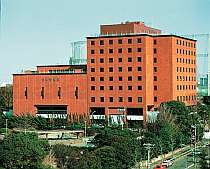
Nihon Seinen Kan
The Festival always takes place at the Nihon Seinen Kan (日本青年館 - Japan Youth Hall), a publicly-subsidized convention center in Tokyo with an attached hotel, a performance hall, and quite a number of rooms. It was barely big enough back when just over a dozen orchestras were participating. The event quickly outgrew the venue, but that didn't stop them both from holding it at the same place year after year and increasing the number of "selected" orchestras every time. I could scarcely imagine what it was going to be like with 30+ youth orchestras of various sizes and levels trying to share that same space. I figured the best option would be to find a safe corner and stay there, but whatever.
My family, who were irritated at my going, managed to see to it that I showed up at the Academy just five minutes before the buses were due to leave. That set Mr. Karatsu into a near panic, but he still had the decency to treat me with respect and make sure we shared the duties as equally as possible under the circumstances
(i.e. he had plenty of advance instruction from Mr. Ogawa as to what was going on, whereas I'd hardly been told spit). The bus ride itself started out uneventful, particularly since the students ignored me almost completely.
(Heck, at first they even forgot to leave me an open seat!) Then the heavens opened up, and we were hit with a raging downpour. To add insult to injury, the entire Tokyo expressway network was solidly jammed up. It didn't take long for us to realize that there was no way we would be arriving in time for the opening ceremony.
The 11th grade student leaders started to panic, so I did my best to keep them calm. It didn't help that it was still gushing when we arrived. I helped unload the kids' luggage so they could stay under their umbrellas, which meant I wound up thoroughly soaked. We had a bit of time before rehearsal, so after we'd deposited our gear in our assigned storage room I let the kids go off to the hall and made my way to the convention hall's cafe for a late
(and overpriced) lunch. After that I just hung out till it was time for the kids to prepare for battle.

We ran into trouble immediately. The Festival has always had a strict rule about keeping the instruments silent except in designated areas. It is not allowed to play in the storage rooms, let alone the hallways. Well, as soon as the kids went into the storage room to get their gear out the cello section immediately launched into a loud tuning and warm-up session. Mr. Karatsu ordered them to stop, and they ignored him. I ordered them to stop twice, and they ignored me both times. Finally I walked around and barked the order to stop directly in the face of each individual cellist, but most of them
still ignored me...including the new 7th grader in the section, who was obediently following his seniors' example. As we then walked from the storage room to the rehearsal hall one of the
(dumber) 11th grade violinists suddenly started serenading passersby...and got all "What did I do??!?" when Mr. Karatsu got on her case.
(It's times like these that I really wish I still had the legal right to smack certain kids upside the head, but I don't, so I can't.)At the rehearsal hall we met Mr. Ogawa, who had only a few brusque words for Mr. Karatsu and ignored me completely. We also met a couple of our regular guest clinicians, Ms. I the violinist and Mr. T the contrabassist. They are both outstanding, professional musicians and great people to boot. Since the rehearsal hall was both extremely small and extremely hot, Mr. Karatsu and I thankfully stayed out in the hall and chatted with the clinicians. It was then that the next scheduled orchestra in line showed up
almost half an hour early and started pestering us to hurry up and let them use the rehearsal room. We politely told them to go stuff themselves.
(I wish. No, actually, we asked one of the event officials to tell them to go stuff themselves. They finally withdrew...whining all the way.)As we went backstage some of our kids were so nervous they were crying. I'd understand that a bit more if it weren't for the fact that
almost all of the wailing ones were 11th graders who had already participated in that same Festival several times! Oh, well. I did my best to help them calm down. We watched the orchestra who was on before us
(and Mr. Ogawa finally acknowledged my existence). Then it was our own curtain time. The kids performed Ponchielli's "Dance of the Hours" from
La Giaconda and Dukas' "The Sorceror's Apprentice", in that order. There was a bit of a flub in the flutes at the beginning of "Dance of the Hours" and a couple of minor trumpet splats in the middle of "The Sorceror's Apprentice", but otherwise I thought the kids did a supurb job. Musically, it was a very high-level performance. Not all of them thought so, though, as there was even
more weeping and wailing afterward.
After that we went back to the storage room so the kids could put their instruments away, and then we split up. Most of the kids immediately went back to the hall to watch the remaining performances, but I stayed put, drank a latte, and kept an eye on things till it was over. That was when the real fun began.
Mr. Ogawa had to accompany the students to a mixer event with some of the other orchestras, but he had made a reservation for us at his favorite, little
(TINY, more like) French restaurant in Shinjuku. Mr. Karatsu and I, Mr. T, Ms. I, and two alumni made our way there by taking taxis to the general vicinity and then getting out and searching...in the still-driving rain.
(Wouldn't you know it, I was the only one without an umbrella, but my concert program at least kept my head dry...) Yes,
Canard is one of the smallest gourmet restaurants I've ever seen
(maximum capacity 18 customers packed in like sardines), but it is good. Its two chefs, both
French
men, are apparently well known in Tokyo. Their fare tends to come in small portions, unfortunately, but it is both delicious and pleasing to the eye. We enjoyed it while helping the restaurant clear what Christmas hadn't already wiped out of their wine selection. That helped cushion the blow of the price, and we were all feeling quite warm and happy when we went back out into the rain to head for our various destinations.
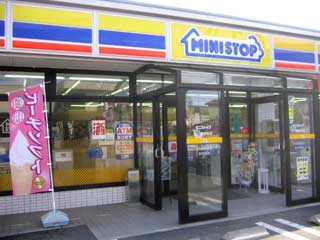
Mr. Karatsu, one of the alums, and I went to the hotel where our group was staying. We checked in, dropped off our luggage, and went to the
Mini Stop convenience store across the street, where Mr. Ogawa had told us he was coming for his dinner. I went ahead and bought some shampoo and a pocket umbrella while we were waiting, and when Mssr. Maestro Ogawa dragged himself in a little later we had a good chat over coffee while he ate his packaged meal. The rain had gotten even worse, but at least now I had an umbrella to protect me during the 30 meter walk back to the hotel.
The room was nice, I enjoyed a good, warm shower, the bed was comfortable, and I didn't sleep a wink.
December 27thI arrived at the dining hall just five minutes late for breakfast, but there was no space available for me at our group's tables, so I
made one. The buffet mainly consisted of eggs and sausage, so I just ate rice and salad. The bus ride back to the convention center was quiet and uneventful.
Day two of the A group Festival kicked off with an important, regular feature, the joint concert. Participants in this event used to be selected by audition, but someone apparently decided that was too unfair. To be more PC, they asked each participating orchestra to send a number of participants based on its size, and the part selection was allocated in the order of the orchestra's appearance on the program. Naturally, the smaller, less-capable groups, who got first dibs, tended to send wind players, while the higher-level groups sent strings. Consequently, when the joint group performed selections from Moussorgsky's
Pictures at an Exhibition the strings sounded excellent, but the winds...didn't.
(Frankly, I think all that "fairness" stuff wound up ruining the performance, but at least no one's feelings were hurt!) After that was a joint string orchestra, which played a couple of Mozart selections, and they were
MUCH better. After that were the last few performances of the A group, all of them very large orchestras.
One thing both Mr. Ogawa and I noticed this year was that the overall level of the event had notably improved. Certainly, some orchestras were better than others, and certain groups have always been either strong or weak, but there were none of the embarrassingly bad performances that had come to be such a regular feature in recent years. This year even the weak orchestras did a reasonably good job. Yes, there were some predictable disasters, i.e. groups attempting pieces that were clearly over their heads,
(a problem when directors put their dreams ahead of reality, )but even those were pulled off well enough to merit respect rather than sympathy. And that last performance, which was by the largest and strongest group by far, Makahari Sougou
(which has a music major program, so it should be that way, )was spectacular. We especially appreciated their rendition of a medley from the movie
Charlie and the Chocolate Factory, complete with students and the conductor doing an Oompah Loompah dance in the middle!
It was so impressive and so energizing that we didn't mind the
(rambling and horribly boring) closing speeches that followed.
Our plan was to have lunch there at the center and then watch the first few performances of the B group event before leaving, but we ran into a snag. One of the B group orchestras that used our same storage room suddenly decided they needed more than their allotted share of tables so they could prepare some kind of awards for their members, so they politely demanded we move our stuff.
(Actually, they had started moving our stuff themselves when Mr. Karatsu and I came in and politely demanded to know what the hell they were doing.) We came to a compromise, moved our stuff around, and settled it all peacefully.
I stayed behind and stood guard just in case when Mr. Karatsu and the others went back to the hall. Two lattes and one accidentally-purchased strawberry milk later
(Thank God for vending machines!?) I saw our buses roll in, so I went to the hall to inform the others.
The load-up and return went smoothly and easily, but I noticed something strange. All of a sudden not only Mr. Karatsu but also the 11th grade student leaders were acknowledging my existence! In fact, they were acting like I was in charge! What a concept! It had been a few years, but I assumed the role
(which doesn't really take much during a return trip) and rode the lead bus, chatting with students all the way. No fuss, no mess, no problems.
Back at Ye Olde Academy, I stayed long enough to make sure the gear was put away and all the younger members safely on their way home. Then Mr. Karatsu and I summoned the lead cellist to the office and gave her a firm dressing down.
(Actually, I demanded an explanation for her section's behavior, and all she would say was something like, "Maybe they all thought that was what I wanted." Umm...weren't you supposed to be in charge? Weren't you also right there doing the same thing right along with them?!? "Maybe they all though that was what I wanted." *sigh*)At least we got lots of very positive comments, even from
(maybe even "especially from") almighty Makahari Sougou. I'd say it was a successful outing.
Tomorrow the New Year cleaning begins...much too late...















